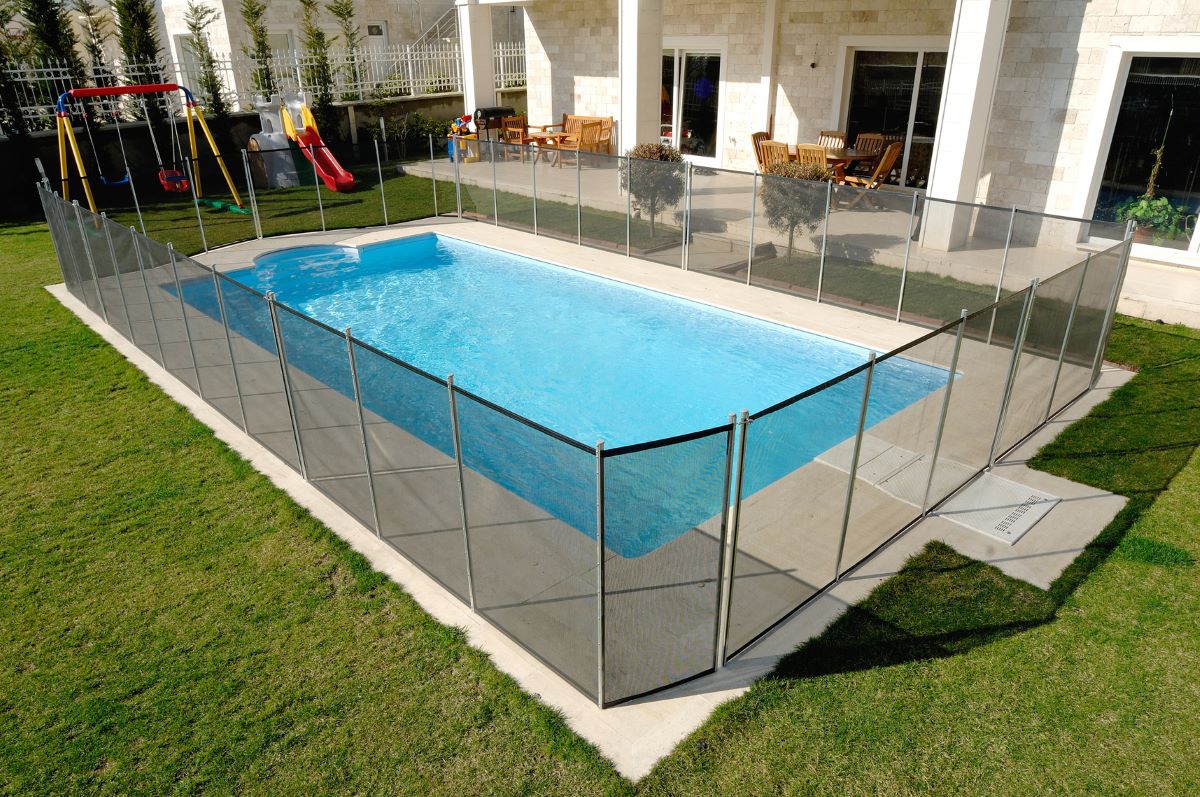

Finance
How Much Does Sports Insurance Cost?
Published: November 14, 2023
Find out the average cost of sports insurance and protect your finances. Compare quotes and secure the best coverage for your athletic activities.
(Many of the links in this article redirect to a specific reviewed product. Your purchase of these products through affiliate links helps to generate commission for LiveWell, at no extra cost. Learn more)
Table of Contents
Introduction
Sports insurance is a crucial aspect of protecting both athletes and sports organizations from financial risks. Whether you are a professional athlete, a member of a sports team, or an organizer of sports events, having adequate insurance coverage is essential in today’s litigious world. However, the cost of sports insurance can vary significantly depending on various factors.
In this article, we will explore the factors that influence the cost of sports insurance, the different types of coverage available, and provide some insights into average costs. Furthermore, we will offer tips on finding affordable sports insurance without compromising on the level of coverage.
When it comes to sports insurance, it’s important to understand that the level of risk associated with different sports can greatly impact the cost of coverage. High-intensity contact sports like football or ice hockey tend to have higher insurance costs compared to non-contact or low-impact sports like tennis or swimming.
Furthermore, the frequency and severity of injuries associated with a particular sport can also affect insurance costs. Sports with a higher likelihood of serious injuries, such as boxing or extreme sports, usually require more comprehensive coverage, leading to higher premiums.
Another key factor influencing sports insurance costs is the level of competition. Elite or professional athletes often require specialized coverage tailored to the specific demands of their sport and the potential financial losses they may incur if they are unable to compete due to injury. As a result, insurance costs for professional athletes can be significantly higher compared to amateur or recreational athletes.
In addition to the nature of the sport and level of competition, the age and health condition of the athletes can also impact insurance costs. Older athletes may face higher premiums due to a higher risk of injury or preexisting conditions, while athletes with a history of past injuries may also face increased costs.
Insurance providers take all these factors into account when determining the premiums for sports insurance coverage. By assessing the level of risk associated with each sport and individual athlete, insurance providers can calculate the likelihood of claims and adjust the premiums accordingly.
In the following sections, we will delve into the specific types of sports insurance coverage available and provide average cost ranges to give you a better understanding of the financial aspects involved in securing sports insurance.
Factors Affecting Sports Insurance Costs
Several factors contribute to the cost of sports insurance coverage. Understanding these factors will help you determine why premiums may vary across different sports and individual athletes.
1. Type of Sport: The nature of the sport plays a significant role in insurance costs. High-risk contact sports like football, rugby, and martial arts are more prone to injuries, which leads to higher premiums. Non-contact sports like swimming or track and field generally have lower insurance costs.
2. Level of Competition: The level at which an athlete competes affects the cost of insurance. Professional athletes usually require more comprehensive coverage due to the higher financial risks associated with their careers. Consequently, insurance costs are typically higher for professional-level athletes compared to recreational or amateur athletes.
3. Injury History: Athletes with a history of previous injuries may face higher insurance costs. This is because insurers consider past injuries as potential risk factors, increasing the likelihood of future claims.
4. Age and Health Condition: Age and overall health condition also impact insurance costs. Older athletes may incur higher premiums due to the increased risk of injuries and age-related ailments. Athletes with pre-existing medical conditions may also face higher insurance costs.
5. Policy Limits and Coverage: The limits and scope of the insurance policy play a crucial role in determining the premium. Policies with higher coverage limits and more comprehensive benefits will generally have higher premiums compared to policies with lower limits and basic coverage.
6. Geographic Location: Insurance costs can vary based on the geographical location in which the sports activities take place. Different regions may have different regulations, risk factors, and associated costs, leading to variability in insurance premiums.
7. Insurance Provider: Different insurance companies have their own pricing models and risk assessment methods. It’s essential to compare quotes from multiple providers to ensure you get the best coverage at the most competitive premium.
8. Deductibles and Co-pays: The amount of out-of-pocket expenses an athlete is willing to bear also affects the premium. Higher deductibles and co-pays can reduce the overall insurance cost but may result in greater financial burden in the event of a claim.
9. Sport-Specific Insurance Requirements: Some sports organizations may require a certain level of coverage for athletes participating in their events. These requirements can add to the overall insurance costs.
By considering these factors and working closely with insurance providers specializing in sports coverage, athletes and sports organizations can make informed decisions to ensure they have adequate insurance protection at a reasonable cost.
Types of Sports Insurance Coverage
Sports insurance coverage can be tailored to meet the specific needs and risks associated with different sports activities. Here are some common types of sports insurance coverage:
1. Accident Medical Coverage: This type of coverage provides financial protection in the event of an accident or injury during sports activities. It typically covers medical expenses, including hospitalizations, surgeries, and rehabilitation costs.
2. General Liability Coverage: General liability coverage protects sports organizations, event organizers, and facility owners against potential lawsuits arising from third-party injuries or property damage. It covers legal expenses, settlements, and judgments.
3. Participant Liability Coverage: Participant liability coverage offers protection to individual athletes and participants involved in sports activities. It covers medical expenses for injuries caused by other participants during organized sports events.
4. Equipment Insurance: Equipment insurance provides coverage for the loss, theft, or damage to sports equipment. It can include coverage for items such as uniforms, specialized gear, training equipment, and sports accessories.
5. Excess Liability Coverage: Excess liability coverage is designed to provide additional protection when the limits of primary insurance coverage have been exhausted. It offers higher coverage limits and helps protect against costly lawsuits and claims.
6. Professional Liability Coverage: Professional athletes, coaches, trainers, and sports instructors may require professional liability coverage. This type of insurance protects against claims of professional negligence, errors, or omissions.
7. Event Cancellation Insurance: Event cancellation insurance covers financial losses incurred due to the cancellation, postponement, or interruption of a sports event. It can protect event organizers against unrecoverable expenses and potential revenue losses.
8. Loss of Earnings Coverage: Loss of earnings coverage compensates professional athletes for lost income resulting from injuries sustained during their sports career. It can provide financial support during the recovery period when athletes are unable to participate in competitions.
It’s important to note that the availability and specific terms of these coverage types may vary among insurance providers. Therefore, it is crucial to carefully review the policy documents and consult with experienced insurance professionals to ensure that the chosen coverage meets your specific needs.
Average Costs of Sports Insurance
The cost of sports insurance can vary significantly depending on multiple factors, including the type of coverage, the nature of the sport, the level of competition, and the individual circumstances of the athletes. Here are some average cost ranges to provide you with a general idea:
1. Athlete Liability Insurance: This coverage typically ranges from $100 to $500 per year for amateur or recreational athletes. Professional athletes may face higher premiums, ranging from $500 to several thousand dollars per year, depending on the level of competition and the nature of the sport.
2. Accident Medical Coverage: Annual premiums for accident medical coverage usually range from $100 to $500 per athlete. The cost can vary depending on factors such as the sport being played, the age of the participants, and the policy limits.
3. General Liability Coverage: The cost of general liability coverage for sports organizations and event organizers can range from $500 to $2,000 per year, depending on the size of the organization, the number of events held, and the associated risks.
4. Event Cancellation Insurance: Premiums for event cancellation insurance typically range from 1% to 3% of the total insured amount. For example, if the insured amount is $100,000, the premium may range from $1,000 to $3,000.
5. Professional Liability Coverage: Professional liability insurance for athletes, coaches, trainers, or sports instructors can have varying costs depending on the level of risk associated with their professions. Premiums can range from a few hundred dollars up to several thousand dollars annually.
Please note that these are average cost ranges and can vary significantly based on the specific details of the insurance policy, the insurer, and the individual circumstances. It is crucial to obtain personalized quotes from insurance providers and carefully review the terms and conditions before making a decision.
Additionally, the level of coverage and deductible amount chosen by the insured will also impact the overall cost of sports insurance. Higher coverage limits and lower deductibles generally result in higher premiums.
Keep in mind that securing adequate insurance coverage for sports activities is essential to protect athletes, sports organizations, and event organizers from potential financial losses. While the cost of insurance may seem like an additional expense, it is a crucial investment to ensure peace of mind and financial protection in the face of unforeseen accidents, injuries, or liabilities.
Specific Examples of Sports Insurance Costs
To provide a clearer understanding of sports insurance costs, let’s explore some specific examples:
1. Amateur Soccer League: An amateur soccer league with 100 participants might require accident medical coverage and general liability coverage. The annual cost for accident medical coverage could range from $5,000 to $10,000, depending on the ages of the athletes and the limits of coverage. General liability coverage might cost around $1,000 to $2,500 per year, considering the number of games and practices held.
2. Professional Hockey Player: A professional hockey player may require accident medical coverage, liability coverage, and loss of earnings coverage. The premiums for accident medical coverage can range from $5,000 to $15,000 per year, while liability coverage may cost around $2,000 to $5,000. Loss of earnings coverage can vary significantly based on the player’s income and career stage, but it might range from $10,000 to $100,000 per year.
3. High School Football Team: A high school football team with 50 players might need accident medical coverage, general liability coverage, and equipment insurance. The cost of accident medical coverage could range from $2,500 to $5,000 per year. General liability coverage might cost around $1,500 to $3,500 annually. Equipment insurance could cost an additional $500 to $1,500 per year, depending on the value of the equipment.
These examples demonstrate the wide range of costs associated with different sports and types of coverage. It’s essential to remember that these numbers are just estimates and can vary based on factors such as the geographical location, insurer, policy limits, and individual circumstances.
When considering sports insurance, it’s recommended to obtain personalized quotes from reputable insurance providers that specialize in sports coverage. By comparing quotes and carefully reviewing the terms and coverage details, you can make an informed decision based on your specific needs and budget.
Remember that investing in the right insurance coverage is crucial to protect athletes, teams, and sports organizations from potential financial setbacks that could arise from accidents, injuries, or legal liabilities.
Tips for Finding Affordable Sports Insurance
While sports insurance is essential for protecting athletes and sports organizations, finding affordable coverage can be a priority. Here are some tips to help you secure sports insurance at a reasonable cost:
1. Shop around and compare quotes: Obtain quotes from multiple insurance providers specializing in sports coverage. This allows you to compare premiums, coverage options, and policy terms to find the best balance of cost and protection.
2. Assess your coverage needs: Evaluate the specific risks associated with your sport and determine the appropriate level of coverage needed. Avoid over-insuring by selecting coverage options that address your unique requirements.
3. Consider group insurance: If you are part of a sports team or organization, explore the possibility of obtaining group insurance. Group policies often offer cost savings and additional benefits, as the risk is spread across multiple individuals.
4. Opt for higher deductibles: Choosing a higher deductible can help lower your premium. However, make sure you can comfortably afford the deductible amount in the event of a claim.
5. Review policy limits: Assess the coverage limits of different policies. While higher limits provide greater protection, they also come with higher premiums. Choose coverage limits that adequately protect your financial interests without unnecessary excess.
6. Consider risk management practices: Implementing risk management practices, such as proper safety protocols, training programs, and equipment maintenance, can help minimize risks and potentially reduce insurance costs. Some insurers may offer discounts for organizations that demonstrate proactive risk management.
7. Maintain a good claims history: Demonstrating a positive claims history by minimizing the number and frequency of claims can help you secure more competitive rates in the long run. Focus on injury prevention and promote a safe environment within your sports activities.
8. Seek professional advice: Consult with an experienced insurance professional who understands the unique needs of the sports industry. They can assist in navigating the complexities of sports insurance and help you find the most cost-effective options.
Remember that while affordability is important, it’s equally crucial to ensure you have adequate coverage. Striking a balance between cost and protection is key to mitigating financial risks associated with sports activities.
By following these tips and conducting thorough research, you can find affordable sports insurance coverage that meets your needs without compromising on the level of protection.
Conclusion
Sports insurance is a vital component of protecting athletes and sports organizations from financial risks. The cost of sports insurance can vary depending on factors such as the type of coverage, the nature of the sport, the level of competition, and individual circumstances. Understanding these factors and considering the tips provided can help you find affordable sports insurance without compromising on necessary coverage.
When seeking sports insurance, it’s crucial to shop around, compare quotes from multiple insurance providers, and assess your specific coverage needs. Consider factors such as the type of sport, the level of competition, and the desired policy limits. Depending on your circumstances, group insurance, higher deductibles, and evaluating policy limits may provide cost savings opportunities.
It’s also important to maintain good risk management practices, such as implementing safety protocols and training programs, to minimize risks and potentially reduce insurance costs. Seeking professional advice from experienced insurance professionals who specialize in sports coverage can be immensely helpful in navigating the intricacies of sports insurance.
Remember that while finding affordable sports insurance is essential, it’s equally important to ensure you have adequate protection. Striking a balance between cost and coverage is key to mitigating financial risks associated with accidents, injuries, and liabilities within the sports industry.
By following these guidelines and conducting thorough research, you can find the right sports insurance coverage at a reasonable cost. Protecting yourself, your team, and your sports organization with comprehensive insurance will provide peace of mind and financial security in the face of unforeseen circumstances.














